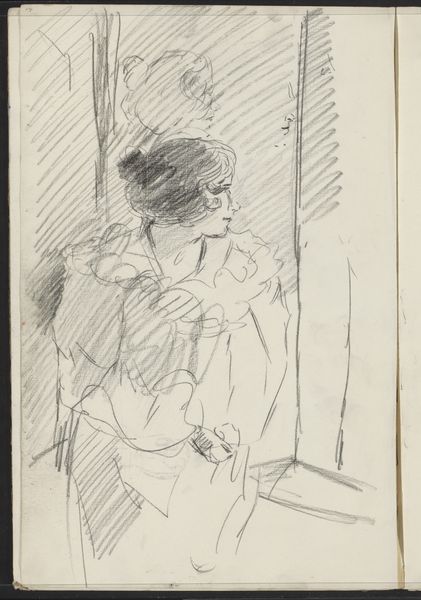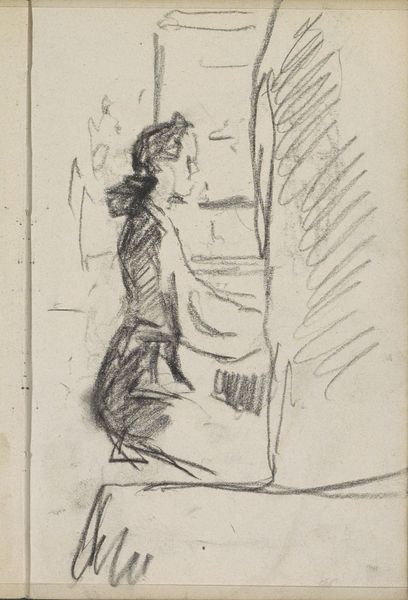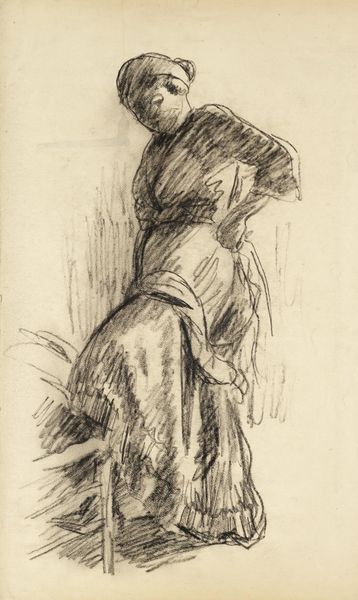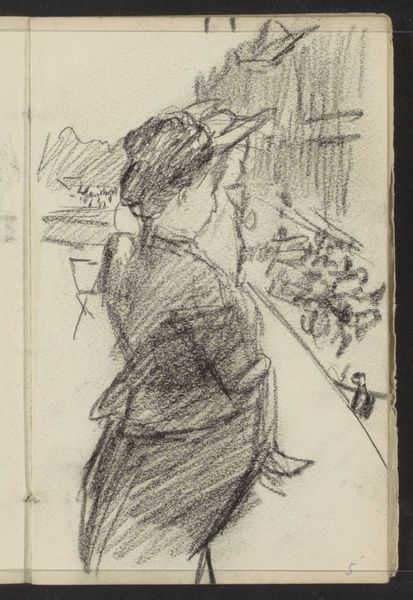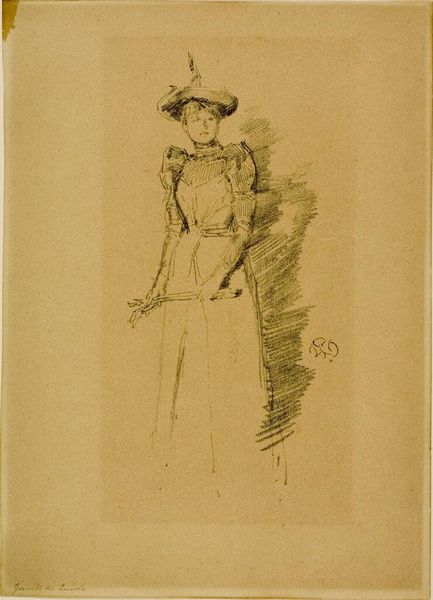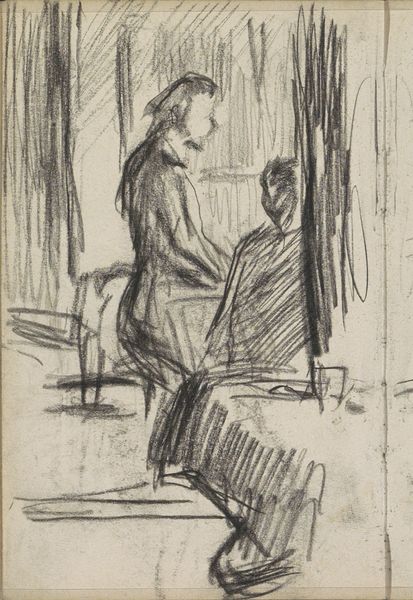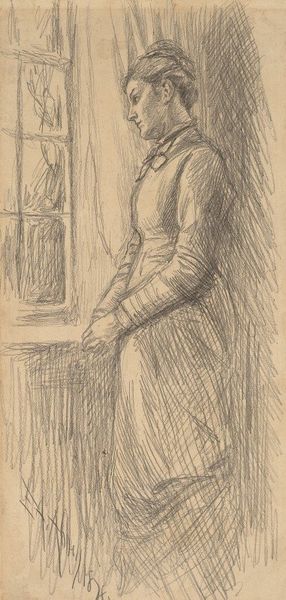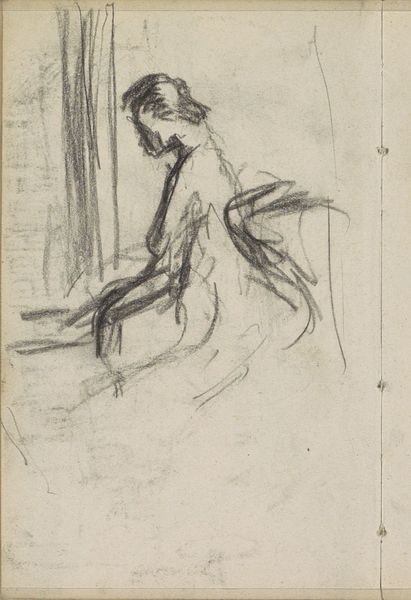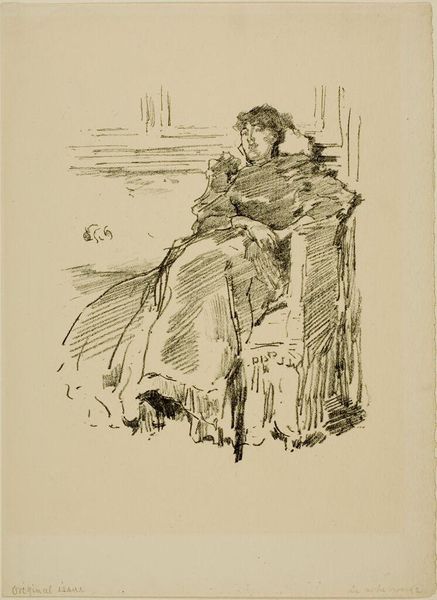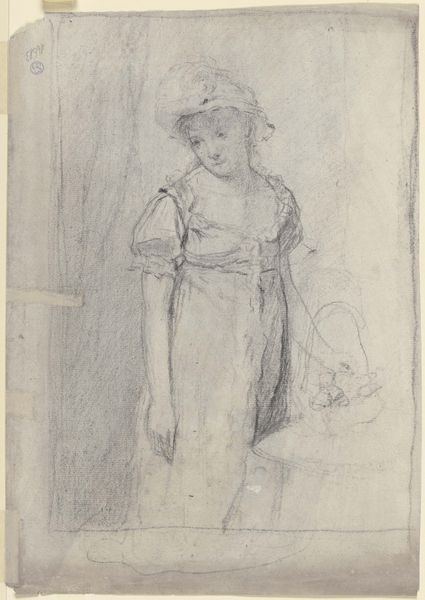
Copyright: Rijks Museum: Open Domain
Editor: This drawing, "Standing Woman by a Wall," by Carel Adolph Lion Cachet, created sometime between 1874 and 1945, is deceptively simple. It feels melancholic, withdrawn even. The woman's posture and the muted tones create this sense of quiet desperation. What can you tell me about this piece? Curator: I see in this image the quiet constraint of women during that period, especially the bourgeois. Consider how her physical presence is literally boxed in— by the wall, the composition itself, and even the medium, pencil, offering a muted reality. The work presents her as being trapped in prescribed gender roles, facing expectations of domesticity and propriety that silenced female voices. Do you notice the way the sketch on the right, although unfinished, almost hints at another figure or expectation hovering? Editor: That’s interesting. I hadn’t really considered that negative space as symbolic. Do you think it hints at a possible future, perhaps marriage or motherhood? Curator: Possibly. The woman’s downcast gaze speaks volumes; there is a weight she carries. Art doesn't exist in a vacuum. Understanding Cachet's work also means looking at broader power structures. Realism and impressionism allowed us to witness glimpses into daily life. Here it prompts conversations around societal pressures women experienced. What is ‘realism’ here, and for whom? Is it freedom, or further constraint? Editor: So, beyond just depicting a woman, it's offering commentary on the social constraints of the time? Curator: Precisely. Art allows us to analyze social dynamics. We can then interrogate the power dynamics and their lasting impacts on intersectional identities and movements even now. Editor: This really makes me see the drawing in a new light, with its delicate touch conveying profound social weight. Curator: Absolutely. It highlights the role of art as an historical and social commentary for the ongoing struggles for agency.
Comments
No comments
Be the first to comment and join the conversation on the ultimate creative platform.

